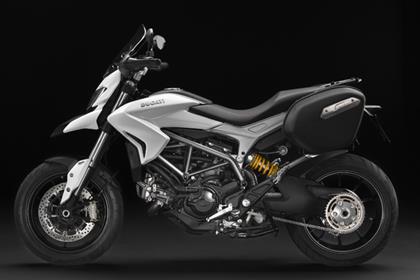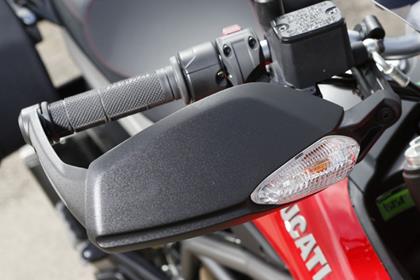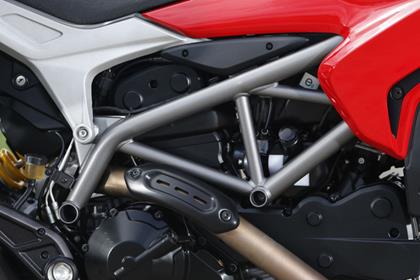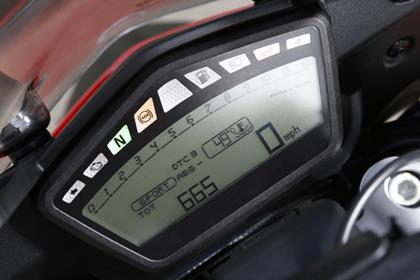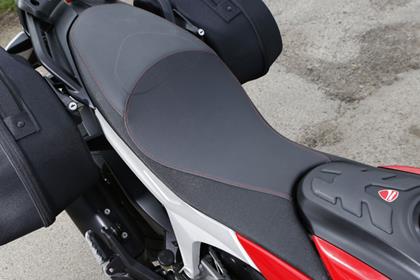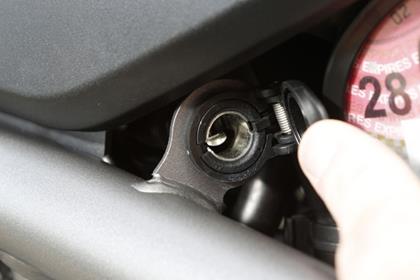What's new on the Ducati Hyperstrada?
The paint’s barely dry on the new 821cc Hypermotard, but Ducati has already created a touring version. With its panniers, centrestand and tall screen, here’s what makes the Hyperstrada different to the Hypermotard.
Electronics
Like the Hypermotard, there’s an eight-stage traction control system and three riding modes: Sport, Touring and Urban. Sport and Touring give you full power, but have differing levels of throttle response, traction control and ABS intervention. Urban mode gives just 75bhp, maximum TC and ABS.
![]()
Chassis
Steel trellis frame, a diecast/techo-polymer mix subframe and diecast single-sided swingarm. The fork is a non-adjustable 43mm Kayaba unit, while the single Sachs rear shock is adjustable for preload and rebound damping. Dry weight is a claimed 181kg, only 6kg heavier than the standard Hypermotard.
![]()
Handlebars
Bars are 20mm higher than the Hypermotard’s and fitted with handguards. Heated grips are an option.
![]()
Brakes
New 320mm diameter front discs with Brembo cast aluminium Monobloc M4-32 calipers and sintered pads. The latest Bosh 9MP ABS system, which weighs just 0.8kg is standard.
![]()
Engine
It’s the same 110bhp, 65.8ftlb, water-cooled, 821cc, 4v, Testastretta 11° V-twin motor as the standard Hypermotard and SP. A major (valve check) service is recommended at 18,000 miles.
![]()
Power sockets
There are two auxiliary 12v power sockets, which can be used for a sat nav, phone charging or heated clothing. One is located on the lefthand side of the engine, the other is near the rear shock reservoir.
![]()
Seat
The Hypermotard already has a more relaxed riding position, but the Hyperstrada is comfier still. The 850mm touring seat is wider and 20mm lower. You can go down a further 20mm with a low seat option.
![]()


